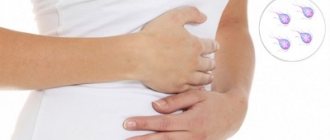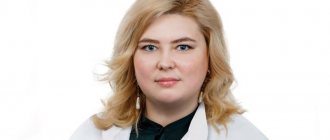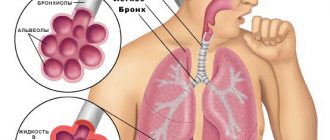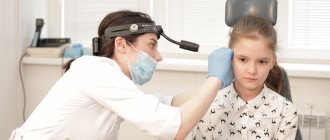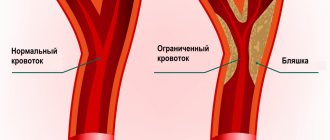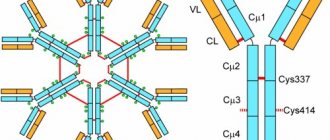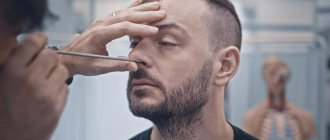The disease COVID-19, which is caused by the SARS-CoV-2 strain of coronavirus, has led to a pandemic in 2021. It is characterized by a polymorphic clinical picture. This means that the symptoms and severity of the disease depend on many factors: the age of the infected person, the presence of chronic diseases, etc. The disease has different symptoms in different categories of patients, which makes it difficult to diagnose.
Coronavirus without symptoms
Asymptomatic patients are considered patients whose smears show SARS-CoV-2, but there are no other signs of the disease.
- Even in the first wave in the UK, according to statistics, 78% of virus carriers had no symptoms or a mild form of infection.
- According to statistics from doctors in Italy, 50-70% of people with coronavirus infection are without symptoms. Research was also conducted in the spring of 2020.
- According to Australian scientists, the disease occurs without symptoms in more than 80% of cases.
- In Russia, at the beginning of the epidemic, it was believed that asymptomatic patients could make up up to a quarter of those infected, in July 2020 they began to talk about 40-50%, and at the beginning of the second wave, doctors say: 25% of those infected have symptoms of the virus, that is, they are asymptomatic 75% of people. Thus, the new Russian data are already close to the results that were obtained in the UK in the first wave.
The difference in data arises because different countries (and at different times) test different numbers of people for coronavirus. The more people are tested, the more asymptomatic carriers and vectors are identified.
Also, the “discrepancy” in the numbers is due to the fact that in some countries asymptomatic carriers of the virus are included in the statistics of COVID cases, in others they are not. And sometimes the approach to the state of things changes, and accordingly, the graph of COVID cases may begin to go in one direction or another.
Also, in some countries, for example, in Kazakhstan, double statistics existed for a long time: those who were directly ill and those who were carriers but had no signs of the disease were counted separately. Control over the first group was stricter; for the second group, sanitary and epidemiological measures were weaker. But then a number of such countries nevertheless came to the conclusion that both people with symptoms and those without them should be counted equally.
Another question is that the former require serious treatment, the latter only require fixation (approach as for persons in contact with carriers of the virus) and take appropriate measures (self-isolation). And it is impossible to say unequivocally whether carriers with and without symptoms pose the same or different danger to others. After all, transmission of coronavirus infection is possible not only through coughing and sneezing, but also through small droplets released from the mouth and nose when talking and breathing. Moreover, if a person who is a carrier of the virus but has no symptoms is in a close, poorly ventilated room with another, the chance of becoming infected is always higher. Transmission of the virus by objects cannot be ruled out. Although scientists have a lot of controversy about this.
What percentage of asymptomatic coronavirus carriers in Belarus is currently unknown. And it is becoming increasingly difficult to obtain this data, because if at the beginning of the epidemic PCR testing was carried out not only on people with symptoms, but also on all identified first-level contacts, then from mid-November 20, 1st-level contacts were subject to PCR testing sent only if respiratory signs are present. These signs are determined on the basis of an independent assessment of one’s condition, a survey of a doctor, and, if necessary, a measurement of the level of oxygen in the blood with a pulse meter (saturation), and an examination of the throat.
In Russia, by the way, the situation is similar. From the decree of the head of Rospotrebnadzor dated November 16, 2020, it follows that citizens who have been in contact with patients with coronavirus can now leave self-isolation after 14 days without undergoing a test for COVID-19.
True, data can also be obtained based on a study of a sample of individuals who have developed antibodies. But even here, not everything is clear. There is no exact data yet on how long they remain in the body.
How is HIV diagnosed in Moscow?
There are two tests to diagnose the virus: preliminary ELISA and the most accurate immunoblot. The accuracy of ELISA is about 90%. It is recommended to carry out it 3-6 months after contact with the virus, then it gives maximum accuracy. The usual ELISA test is based on a blood test, but there are also rapid tests that help obtain information based on urine or saliva. Such texts are purchased exclusively at the pharmacy (in no case on the Internet!), since it is necessary to use officially approved products.
If the rapid test gives a positive result, you need to go to an infectious disease specialist yourself. In such a situation, as well as when ELISA in a blood test gives a positive result, the patient is prescribed an immunoblot. Its reliability is already 99.9%. Depending on the diagnosis, the diagnosis is made either on the basis of two repeated tests or a combination of both. The analysis is rechecked and only after this a diagnosis can be made. This is necessary in order to exclude false positive results that may occur during the diagnostic process.
Important: the test does not show how HIV is transmitted in a particular situation - that is, you can determine the route of infection only by analyzing your own actions.
What is the incubation period for coronavirus infection?
The incubation period for coronavirus infection in most cases is up to 10 days. The first wave was considered to be up to 14 days . In some isolated cases, the incubation period lasts about 20 days.
The highest chance of becoming infected is from a person who is a carrier of coronavirus, but until the disease is recognized - 1-2 days, as well as from a person who has been sick with COVID-19 for 1-4 days. 95% of patients thus fall within the range of two to six days. During the incubation period, SARS-CoV-2 does not manifest itself in any way.
Another difficulty is that if coronavirus is without symptoms, it is difficult to give an objective assessment of which day of illness is the first.
By the way, if we compare the incubation period of coronavirus infection and influenza, then the latter has a shorter incubation period. In the latter case, in most cases it lasts a day or two.
Ribavirin
It is quite difficult to assess the effectiveness and safety of ribavirin. On the one hand, this drug inhibits the reproduction of the vast majority of viruses, on the other, the mechanism of action of ribavirin is not fully understood. At the end of January, the Ministry of Health recommended the use of this antiviral drug to treat coronavirus. It is prescribed to children for respiratory syncytial infection (a rare type of acute respiratory viral infection), which causes severe lung damage. The drug is used for severe influenza, for measles in children with immunodeficiency, and in combination with interferon ribavirin to treat viral hepatitis C.
However, Academician of the Russian Academy of Sciences Alexander Chuchalin criticized the recommendations of the Ministry of Health. When prescribing the drug to adults, it is necessary to take into account its teratogenicity (threat of disruption of embryonic development), therefore ribavirin is strictly contraindicated during pregnancy. Despite the fact that the drug inhibits the reproduction of many viruses, it is very toxic and causes many side effects.
At the end of March, the Ministry of Health excluded ribavirin from the list of recommended drugs for the treatment of COVID-19.
More and less common symptoms
The most common symptoms with which the disease begins are respiratory (fever, cough, sore throat). At first, the disease is easy to confuse with the flu, sore throat, or acute respiratory infection.
Among the common symptoms is the loss of the ability to recognize smells (but it is important to understand that this is not an indicator, there are patients who have this symptom, but do not get sick with coronavirus, and there are people who have a moderate and severe form of the disease, but they have no taste differentiate).
If the disease progresses quickly, shortness of breath (feeling of lack of air, difficulty taking a deep breath), and chest pain are immediately added.
More rare are symptoms of a dermatological nature (rashes on the body, mucous membranes), nausea, vomiting, diarrhea, hemoptysis, unbearable headache.
Also not the most common symptoms in patients with coronavirus, but related to its symptoms, are swollen veins, cyanosis of the skin, and surges in blood pressure.
Let us consider which of these symptoms appear first, how symptoms change from day to day, whether there are differences in the manifestation of symptoms in adults and children, what you need to remember if your sense of smell has disappeared.
HIV and AIDS - differences, duration of development, forecasts
AIDS is the final stage of HIV, which is characterized by severely reduced immunity. It is important not to confuse these two concepts. From the moment of HIV infection, the disease can develop to the AIDS stage without treatment within 9-11 years (on average). Once diagnosed with AIDS without treatment, life expectancy is short - on average up to 19 months.
If you start treatment on time, you can live a very long life at the HIV stage - the life expectancy of such patients thanks to modern treatment is 20-50 years. And although at the AIDS stage the situation is much more complicated, many patients, with proper treatment and a strong body, can live more than 10 years.
It is obvious that taking therapy is the most important factor for treating HIV and living a full, long life. Moreover, it is treatment that can significantly reduce the viral load and make the infected person harmless to the partner, as well as family members.
What is the first symptom of coronavirus?
Various symptoms can be the first to make themselves felt. But, as a rule, these are respiratory manifestations.
- Fever. In some patients the temperature is immediately above 38 °C, in some patients it is low-grade: 37.1 – 37.3 °C.
- A sore throat. Moreover, as a rule, the back wall of the throat hurts more. At the same time, there is an unpleasant taste in the mouth.
- Dry cough. A person cannot “clear his throat.” His sputum does not come out.
- Fatigue. Malaise even after minimal physical exertion.
- A slight runny nose (at first it was believed that if you have a runny nose, then it’s not Covid), but later it turned out that everything was very ambiguous. A runny nose during COVID makes itself known less often than a dry cough, but its presence or, on the contrary, absence, cannot be a signal for an accurate diagnosis.
Among the first symptoms of coronavirus is anosmia – loss of smell. At the same time, like respiratory symptoms, loss of smell or taste cannot be called a direct “indicator” of COVID-19. The same symptoms are characteristic of neurological patients (for example, this symptom is common in those suffering from Alzheimer's disease). And in some cases, this is not a sign of pathology at all, but a sign of aging (more often in men). True, if before 2020 they did not pay much attention to it, then with the mass circulation of information that this is a symptom of coronavirus, many began to focus on it. Also, people who have suffered head injuries or nasal polyps often experience loss of smell.
However, some patients are only concerned about loss of smell and fatigue. This audience is classified as patients with mild symptoms of coronavirus.
How to distinguish from flu and colds
WHO specialists analyzed what the very first symptoms of coronavirus appear in those infected, and compared them with the clinical picture of ARVI and influenza.
| Sign of illness | ARVI | Flu | COVID-19 |
| Headache | Rarely | Often | Often |
| Temperature increase | Less than 38 degrees | Up to 38-39 degrees | Up to 40 degrees |
| Feeling worse | Smooth | Sudden | Sudden |
| Cough | Rarely | Dry or wet | Dry without phlegm |
| Loss of smell | No | No | Often |
| Diarrhea | No | Maybe | Often in childhood |
Coronavirus symptoms without fever
Without fever, coronavirus is more common in children than in adults. In this case, against the background of the absence of temperature, the patient can experience the entire symptomatic spectrum, as in a patient with fever. Starting from a sore throat, and up to coughing, severe muscle pain, severe weakness (weakness).
Moreover, if adults have symptoms of coronavirus without fever, two radically opposite “scenarios” are possible.
- The disease occurs in a mild form.
- The functioning of the immune system is disrupted. After all, it is important to understand that behind the rise in temperature lies the body’s mechanism for fighting the disease, working to prevent complications (for example, in the form of pneumonia).
Often, frail elderly people have no fever during COVID. Their hypothermia is often caused by regular use of drugs to treat cardiovascular diseases.
Among people who suffer from viral infections without fever, there are also many who suffer from thyroid pathologies. And the reason for this is either the improper functioning of the thyroid gland itself, or the use of drugs aimed at correcting its function.
Hypothermia is also often observed in allergy sufferers who regularly have to take antihistamines, and in people who have recently suffered any bacterial infections and have been treated with antibiotics for a long time. Moreover, these could be both infections of the respiratory tract and, for example, the genitourinary system.
Despite the fact that in weakened elderly people the disease can occur without high fever, they often have difficulty breathing, many have movement and speech disorders (in this case, the symptoms of COVID-19 are close in symptoms to a stroke, and in some carriers of SARS-CoV-2 This strain is a stroke provocateur).
Popular questions and answers about HIV
How does HIV manifest in men and women?
The symptoms of HIV in women are exactly the same as the symptoms of HIV in men. Manifestations may differ only at the level of genitourinary diseases, when the body is already very weakened - for example, thrush appears more often in women. Otherwise, there are no specific signs by gender.
Is there a cure for HIV?
Technically, we can say that there is no cure for HIV - patients are constantly required to undergo special therapy. But the results that it allows to achieve make the patient a healthy person who can live calmly for decades without any problems - you just need to constantly take medications and monitor your health.
HIV has not been a fatal disease for a long time!
Is HIV a disease of drug addicts and people with disordered lifestyles?
In fact, this is a myth that HIV activists are constantly dispelling. Unfortunately, a person who leads a healthy lifestyle and is responsible for their relationships can also get this disease. It is enough that a sexual partner can cheat – and in this way “bring” illness to the couple. HIV is not always a sign of an irresponsible attitude towards one’s life.
Who are HIV dissidents?
These are people who, contrary to scientific data and common sense, deny the existence of the virus. They refuse treatment, which inevitably leads to early death. Such people are also dangerous because, due to lack of treatment, they spread the virus among their sexual partners without warning them of the possible danger (because they do not believe that it exists).
The success of HIV treatment and long life lies in seeking help and starting therapy as early as possible. In this case, a person will have a long life without fears and difficulties.
Symptoms of coronavirus in children
About 20% of children who are carriers of SARS-CoV-2 do not notice this disease in themselves.
In most children, Covid occurs in a mild form, like a cold: the temperature rises, but is not critical, or the disease goes away without it at all, there is fatigue, a slight cough, and there are no pathological changes in the lungs.
But there are children who have a hard time with COVID-19. Most of them are among babies under one year old (more than 10%). Risk group and age 1-5 years (over 7% of children at this age require serious treatment). But among children and adolescents aged 6 - 16 years, severe disease is typical for 3 - 5%.
With moderate severity, there is lung damage (pneumonia), but there is no shortness of breath. In severe cases of the disease, in almost all cases the temperature is above 35%, problems with the lungs are serious (difficulty breathing, coughing is painful), the skin begins to turn blue. Many people have problems with the stomach and intestines. They make themselves known by diarrhea and vomiting.
Symptoms of coronavirus in infants
The most difficult thing is with symptoms in infants. After all, they cannot say what bothers them, what hurts. Some of the symptoms can easily be attributed to teething, intestinal colic: increased tearfulness, anxiety, problems falling asleep.
At the same time, for example, the same intensity of intestinal colic is a characteristic sign of coronavirus in infancy.
Respiratory manifestations most often boil down to redness of the throat, nasal congestion, coughing, while most infants do not have breathing problems.
In a number of infants, especially if the disease has severe colic, severe fever and repeated vomiting.
Symptoms of coronavirus in preschoolers and schoolchildren
In children of preschool and school age, symptoms are often vague. Many symptoms, at first glance, look like a “typical cold.” But the coronavirus may be hiding behind it. Therefore, children who have even the first signs of a “cold” – a sore throat, runny nose – are advised not to go to school or kindergarten.
Observations also show two trends:
- Among schoolchildren, the highest transmission of the virus is from asymptomatic carriers.
- The spread of the pathogen among children in middle and high school is higher than among children in kindergarten and primary school.
For lovers of conspiracy theories
At the end of January 2021, the famous blogger Tyler Durden published an article Did China Steal Coronavirus From Canada And Weaponize It, which states that the 2019-nCoV coronavirus is a product of developments by Chinese virologists working on secret projects to create biological weapons. The author reports that in March 2021, particularly virulent viruses were stolen from the Canadian NML laboratory, which subsequently ended up in China. This laboratory, which had biosafety level 4, among other things, studied dangerous coronaviruses. Later, Dr. Xiangguo Qiu and her husband Dr. Keding Cheng, whom the author calls Chinese agents working for the government's secret biological warfare program, were fired. One of the research institutes participating in this program is located in Wuhan, China - the Wuhan Institute of Virology of the Chinese Academy of Sciences. This institution is located just 20 miles from the fish market, which became the epicenter of the spread of the 2019-nCoV coronavirus. The blogger claims that these viruses are included in the Chinese biological weapons program and are therefore being actively studied in several laboratories, the funding of which is increasing year by year. The outbreak of the new coronavirus in Wuhan could be associated with the creation of these weapons.
It is difficult to say how reliable such information is. The truth is that such a laboratory does exist in Wuhan. It was created after the SARS-CoV outbreak specifically to study the pathogens that cause SARS. Such objects, as a rule, have a high degree of biological protection, therefore it is difficult to allow a banal leak of hazardous biomaterial into the external environment. Similar theories occurred at the beginning of the 20th century during the Spanish flu epidemic. Then there were persistent rumors that the new influenza virus was launched by the German company Bayer in order to increase sales of its drugs.
Be that as it may, many virologists and epidemiologists say: the world needs to prepare for the emergence of new viruses that will provoke mass cases of severe acute respiratory syndrome.
Covid on the skin
In addition to the characteristic symptoms, a number of SARS-CoV-2 carriers who have recovered from COVID also have dermatological symptoms. Most often these are red and purple bumps and redness on the skin.
- Visually, problem areas resemble areas after frostbite. As a rule, these are shapeless asymmetrical spots on the arms and legs. The formations may hurt and sometimes itch.
- Small blisters on the torso, arms and legs.
- Livedo is a red-blue network of vascular nature.
Dermatological problems can make themselves felt both at the first stage of the disease and when the disease has already developed. If we are talking only about redness and rashes, then they disappear within 2 weeks; if bumps have formed, then they can remain on the skin for several months.
In some COVID patients, the skin begins to peel off at the site of the bumps.
Spots are more typical for children, adolescents, young people, blisters - for middle-aged people, and livedo - for the elderly.
Dermatological manifestations of coronavirus infection are most often associated with overexpression of anti-inflammatory cytokines (peptide molecules), which are responsible for transmitting signals between cells. In fact, there is an “imbalance” in the body’s inflammatory response. But some rashes occur due to constant sweating at high temperatures. Infectious and allergic skin lesions are also possible.
Dental problems
Among the symptoms that were not paid attention to at first, but then noticed in a fairly wide number of patients with coronavirus, is exanthema, that is, a rash on the mucous membranes. Typically in the oral cavity.
Just by the presence of a rash in the mouth, one cannot judge that a patient has coronavirus. At the same time, if this sign is present, but there are no other symptoms, it cannot be ruled out that it is not Covid.
Although in many cases, classic enteroviral vesicular stomatitis may be behind the rash in the mouth. This is also an infectious disease, but it requires its own treatment.
A number of coronavirus patients develop ulcers and red bumps in their mouths, which can begin to bleed in spots.
Bacteria, come out!
There is a risk of bacterial flora joining the virus. If a person at the time of infection with coronavirus, the conditionally pathogenic flora that was always present in him was at the upper limit of normal, then the values will begin to creep up, and noticeably, says the otorhinolaryngologist. A purulent process may develop. This usually happens on days 4-5, notes Vladimir Zaitsev.
At home, it is advisable to have a thermometer to monitor temperature, a tonometer to monitor blood pressure, a supply of ascorbic acid, which will strengthen the immune system, and antiviral agents. You can also stock up on ginger and lemon to make tea with. If a person is sick, it is advisable that he has on hand in the refrigerator such berries as cranberries, lingonberries, black currants, that is, those that are rich in vitamin C. Naturally, consultation with a specialist is required.
There are contraindications, you should consult your doctor
Thromboembolism
Another common phenomenon that is important to consider when talking about symptoms is thromboembolism. It encounters many patients with moderate and severe forms of coronavirus.
Many people know about the serious consequences of thromboembolism. Not everything is about how she manifests herself.
Among the characteristic signs of thromboembolism:
- swelling of veins, often cervical
- blueness (cyanosis) of the face,
- drop in blood pressure.
However, again, these symptoms cannot be considered a direct signal of COVID-19. In addition to coronavirus, thromboembolism can be caused by injuries, varicose veins of the legs, the presence of a catheter, diseases associated with heart rhythm disturbances, malignant tumors, prolonged bed rest, and surgery with large blood loss. Also among the risk factors are old age, taking contraceptives and pregnancy.
In some patients, thromboembolism is not a symptom, but a complication. Most often, this again happens in older people and pregnant women. In addition, people with respiratory and heart failure are vulnerable, as well as those whose coronavirus has damaged the endothelium of blood vessels (a monolayer of vascular epithelial cells).
Tunnel consciousness, panic attacks
Among the signs of coronavirus in people with severe forms of the disease is tunnel consciousness. A person cannot concentrate on anything. He focuses only on the disease and the fears around it. He does not focus on recovery, “here and now,” but obsessively searches for the reason why he got sick, suicidal thoughts are possible.
Among the mental manifestations of coronavirus are panic attacks . Women suffer from panic attacks twice as often as men.
A panic attack is not just a feeling of anxiety, but pronounced fear, which is accompanied by a number of physically unpleasant sensations. Among them are increased sweating, trembling of fingers (tremor), nausea, upset stool, and chest pain.
The most informative evidence that this is a symptom of Covid or a classic panic attack is obtained by a test (smear), but there are also a number of other signs. The role is played by whether such signs are observed for the first time and how long the panic attack lasts. If this is a true panic attack, and not a symptom of COVID, then 15 minutes after the onset of the attack the person begins to “let go,” especially if you take deep breaths.
With COVID, this exercise most often does not help. After all, the reason is a lack of air, depression of respiratory function, and in this case only saturation of the lungs with oxygen helps to cope with the attack.
Headache
8% of COVID-19 patients have headaches. Their intensity is quite strong even if there is no high temperature at the same time.
As a rule, ordinary antispasmodics, painkillers such as nemisulide, analgin for pain arising from COVID do not help much.
With such pain there are no other typical signs for other pathologies (for example, dizziness, as with hypertension, vegetative-vascular dystonia). However, the nature of headaches with Covid is also of a vascular nature. The virus negatively affects vascular endothelial cells. There are problems with blood flow. The lumen of blood vessels narrows significantly. A headache in this case is a signal of a lack of oxygen. And if this deficiency is replenished, then the headache problem is solved.
By the way, when pathologists autopsy the bodies of those who died from coronavirus and micrograph the brain, sharply narrowed blood vessels and signs of inflammation are visible. The vessel becomes unable to properly supply the brain with blood.
And also, as practice shows, about 1% of headaches during a pandemic are completely false. Suspicious people experience headaches when reading news about coronavirus, hearing news that one of their friends has contracted coronavirus (even if there was no contact with him).
How to understand that you are sick
To confirm the diagnosis, methods are used that detect either viral RNA in samples (in saliva) or immunoglobulins (circulating in the blood) that are produced in response to the virus. But tests are not 100% accurate, so they can be done several times. Also, additional imaging methods (CT, X-ray of the lungs) help make an accurate diagnosis.
You can suspect an asymptomatic course in family members where there is at least one infected person and everyone else has close contact with him. But only tests can confirm this for sure if there were no symptoms.
Conjunctivitis with COVID
Some patients with COVID have pronounced conjunctivitis, while others do not have any traces of it.
Most often, signs of conjunctivitis are present in those individuals in whom the virus entered the body through the eyes. This is why not only masks are so useful, but also safety glasses and shields.
All types of conjunctivitis are visually similar. It is especially difficult to distinguish between different types of viral conjunctivitis (viral conjunctivitis - not necessarily caused by a strain of coronavirus). But viral conjunctivitis can be distinguished from bacterial conjunctivitis even without tests.
In the field of attention is what is separated from the eyes. If it is bacterial, it is dense, white, yellow, and if it is viral, it is watery.
It is also worth paying attention to the parotid lymph nodes. With viral conjunctivitis, the lymph nodes in most cases are painful when palpated.
HIV treatment
Treatment boils down to prescribing antiretroviral therapy. The patient is given a medication regimen - and it must be followed as precisely as possible, without deviating from the program. Otherwise, the virus may develop resistance to treatment and cannot be further suppressed.
Indicators of quality treatment are a decrease in the viral load, as well as an increase in CD4+ cells in the blood, which indicates the activity of the immune system.
Medicines for treatment are issued in medical institutions, patients are registered and receive medications free of charge, in accordance with the established procedure. Information about the disease is confidential - it is not sent to work, place of study or other places. The patient has the right to keep it secret (if this is not provided for in separate work contracts).
If the rules for taking therapy are followed, the virus in the blood gradually decreases; over time, the patient becomes completely safe for his sexual partner and is not able to infect anyone.
Speech and movement disorders
Speech and movement disorders due to coronavirus can be observed in severe forms of the disease and direct entry of the virus into the brain.
The diagnosis in this case is COVID-19-associated necrotizing hemorrhagic encephalopathy.
Her symptoms are similar to hemorrhagic encephalopathy caused by strains of the Coxsackie A virus and H1N1 influenza.
The frequency of words in speech changes, perseverations arise - repetitions of individual words and even phrases, some phrases begin to be “swallowed”, errors in cases and word order in a sentence begin, problems arise with muscle articulation (it becomes difficult for a person to repeat a simple tongue twister even at a slow pace. Coordination of movements is also impaired.
Sources
- Ministry of Health of the Russian Federation. Temporary guidelines. Prevention, diagnosis and treatment of new coronavirus infection (COVID-19). Version 13 (10/14/2021).
- Lyubavina N.A., Saltsev S.G., Menkov N.V., Tyurikova L.V., Plastinina S.S., Shonia M.L., Tulichev A.A., Milyutina M.Yu., Makarova E. .IN. Immunological approaches to the treatment of new coronavirus infection (review) // Sovrem. technol. honey. 2021. No. 3.
- Zayratiants O.V., Samsonova M.V., Chernyaev A.L., Mishnev O.D., Mikhaleva L.M., Krupnov N.M., Kalinin D.V. Pathological anatomy of Covid-19: experience of 2000 autopsies // Forensic medicine. 2021. No. 4
- Resolution of the Meeting of the Presidium of the Formal Committee of the Russian Academy of Medical Sciences on March 16, 2007. — RAMS. — P. 2.
- World Health Organization. (2020). Corticosteroids for COVID-19: living guidance, 2 September 2021. World Health Organization.
- Maslennikov, R., Ivashkin, V., Vasilieva, E. et al. Interleukin 17 antagonist netakimab is effective and safe in the new coronavirus infection (COVID-19). Eur Cytokine Netw 32, 8–14 (2021).
Coronavirus symptoms by day
If the disease has symptoms, then it proceeds through certain phases. And each phase is characterized by its own symptoms.
Days 1-4 – phase 1 . In this phase, the following signs most often manifest themselves: fever, muscle pain, sore throat, dry cough. If the body is amenable to treatment, then improvement may begin after the 1st phase. Either the person recovers, or for another week or a week and a half there is a sluggish cold - often without a high fever, but with a “stuffed” throat, a slight cough, and fatigue.
5-10 days – 2nd phase . If the body cannot cope with the disease, then on the 5-6th day a new phase begins, which is characterized by a lack of air and the development of pneumonia. If timely measures are taken, including providing the patient with oxygen support, respiratory failure can be overcome by the 10th day of illness. As a rule, oxygen support is prescribed when saturation changes and oxygen levels are below 94-90%. In hospitals in Belarus, oxygen is supplied into the nose through a cannula, as a rule, when the oxygen level is less than 93%.
The unpleasant thing is that on the 4th day, some patients begin to believe that they are getting better (the criterion is that the cough has become wet, not dry). But a wet cough does not always mean a healthy cough. In some cases, the appearance of sputum is the result of fluid accumulation in the alveoli, and this is precisely followed by a violation of oxygen metabolism. That is why temporary relief on the 5th day may be followed by deterioration, and the 2nd phase is then inevitable.
If the patient's water-electrolyte balance is disturbed, then on days 5-10 convulsions, spasms in the gastrointestinal tract, and insomnia may also appear.
Day 10-12 – phase 3 . On the 10-12th day, in most patients the temperature returns to normal, but muscle pain and a feeling of lack of air may remain. In this case, the respiratory function is restored in some patients, while in others shortness of breath remains the main companion.
Days 13-20 – phase 4 . In this phase, symptoms remain, as a rule, in patients with severe disease. At this moment, there is a high risk that complications from the heart, kidneys, or heart may occur.
On the part of the kidneys, this is, for example, a drop in diuresis (urine volume), inhibition of consciousness; on the part of the heart, inflammation of the heart muscle. If a patient has a weak liver or has chronic diseases of this organ, then the risks of their exacerbation are high.
It is important to understand that different patients may have different “scenarios” for the development of the disease. There are cases when a coronavirus infection is asymptomatic, but then, after a person has formed antibodies, pneumonia develops. This is not a typical option, but it also occurs.
The course of the disease can be relatively mild, moderate or severe.
- Light form . Symptoms last 4-14 days. Limited to phase 1 (see above). For a number of patients, a mild form of coronavirus ends with a complete recovery, while a number have difficulties with the respiratory system (there is still a cough), liver (ALT levels increase), and kidneys. But there is no exact data on whether the coronavirus or intensive care is to blame for most problems. After all, the same level of ALT can be increased by paracetamol, antibiotics, aspirin - drugs that are important for treating COVID-19 itself, relieving symptoms, stopping the development of the disease, and they cannot be canceled, this is a greater risk for the body. But after a person has had COVID-19, it is important to monitor these indicators and support the liver and kidneys. If there are no serious chronic diseases of these organs, the body recovers over time. For example, the liver is supported with drugs based on essential phospholipids.
- The disease is of moderate severity . The patient “goes through” 2 phases of disease development. It all starts close to the flu, then pneumonia develops, which usually develops in the alveoral space (directly in the alveoli there is an exchange between air and blood). Hypoxia with moderate severity of COVID-19 is not uncommon, especially if a large area of the lungs is affected, but patients usually do not require mechanical ventilation. It is possible to increase the oxygen level by supplying oxygen into the nose using a cannula, through breathing exercises, and prone position (lying on the stomach).
- Severe form of COVID-19 . Affects all phases of disease development. At the first stage there is a pronounced fever. Possible loss of consciousness. Acute respiratory distress syndrome and extensive pneumonia develop rapidly. Moreover, not only in the alveoral space, but also in the interstitial space, i.e. between partitions. In this case, pulmonary edema increases very quickly. CT scan shows a ground glass pattern. Blood clots may form in the arteries. Also, it is with pneumonia in the interstitial space that a person is more often oxygen-dependent: the natural oxygen level is low, oxygen deficiency occurs. Such patients often require mechanical ventilation, very high doses of drugs that reduce blood clotting activity.
Doctors' advice for the first signs of coronavirus
Therapists advise not to panic when receiving a positive test result and not to rush to take medications. Medicines are needed to speed up the destruction of the virus and get rid of unpleasant symptoms - cough, nasal congestion, headache. If the signs of the disease are weak or absent at all, and the body temperature quickly stabilizes, it means that the body is coping with the infection on its own. There is no need to load the kidneys and liver with drugs.
Candidate of Medical Sciences, endocrinologist Zukhra Pavlova, in an interview with the Komsomolskaya Pravda newspaper, said that chills due to coronavirus can be easily dealt with without medications. She explained that the symptom is caused by poor circulation. To restore it, it is useful to drink herbal teas or warm berry infusions.
Another advice from doctors is to review your diet. In the first days of illness, appetite is reduced. This is a natural reaction of the body. There is no need to force yourself to eat, especially if the first symptoms of coronavirus are digestive system disorders. It is enough to maintain a water regime - drink still water, tea with lemon, juices, berry fruit drinks.
When the appetite returns, take liquid food - broths, soups, cereals. Fermented milk products are useful for normalizing intestinal function and preventing dysbiosis. To enrich the body with vitamins and minerals, vegetables and fruits are introduced into the diet. You should avoid any heavy food – fatty meat, mushrooms, smoked meats. You need to eat small portions 4-5 times a day.
In what cases should you consult a doctor?
- If you have symptoms such as fever and dry cough, you should consult a doctor immediately.
- If the symptoms are atypical (for example, dermatological + loss of taste), but there is a suspicion that there has been contact with a carrier of the coronavirus, you should not delay visiting a doctor either.
- If you have difficulty breathing (severe shortness of breath), there is a feeling that there is no oxygen, you should immediately call an ambulance.
- The situation when a loss of smell occurred was not previously considered a reason to immediately go to the doctor, but in the current epidemic situation, with loss of smell (and especially at the same time with loss of taste), it is important to undergo laboratory diagnostics and exclude infection with coronavirus.
- If there are any manifestations of colds, a sore throat, or a runny nose, then in a pandemic, this is also a signal to see a doctor.
In a special risk group:
- Elderly people, the risk of complications is especially high in patients over 70 years of age.
- Persons with somatic diseases of the endocrine and cardiovascular systems: especially arterial hypertension, diabetes, atrial fibrillation.
- Taking hormonal medications.
- Persons with chronic respiratory diseases (COPD, asthma, pulmonary hypertension, idiopathic pulmonary hemosiderosis).
- Cancer patients.
- Persons with excess body weight and metabolic disorders.
How to influence COVID symptoms with breathing exercises?
Exercises that are aimed at optimizing air exchange in the alveoli of the lungs also help to reduce a number of symptoms (if the disease is not severe) or increase the speed of treatment in severe forms of the disease.
Exercises based on quick short breaths of air through the nose and passive exhalation give good results.
In addition to the fact that exercise saturates the body with oxygen, blood circulation improves and lymphatic drainage is put in order. Breathing exercises are also useful for combating inflammatory processes. The optimal option is about 30-40 breaths, 3-6 seconds of rest and cyclic repetition of the exercises 3-4 times. It is best to do exercises in a well-ventilated area on an empty stomach, or if you feel very weak, 1.5-2 hours after eating.
Hypertension is a contraindication for performing breathing exercises. Exercise can further raise your blood pressure.
Fourth day of illness
Afterwards, the infection begins to descend deeper and enters the respiratory tract. The speed of development of symptoms is explained by the fact that with a virus everything proceeds at a faster pace than with bacterial inflammation. “The temperature can rise rapidly, the mechanisms become stronger, everything happens faster,” says the ENT specialist.
There is also such a symptom as hoarseness of voice. “Since the mucus flows along the back wall, the person swallows it all, at night he does not control this process, everything ends up in the larynx, hoarseness is noted, he becomes rougher. It also happens that a person basically becomes uncomfortable talking all day. By day 3-4, the temperature is already very high, and a dry, painful cough develops,” says the otolaryngologist.
Coronavirus prevention measures
- Wear masks, medical respirators, disposable gloves, and eye shields.
- Wash your hands regularly and treat them with antiseptics that contain 70% alcohol. Also treat handles, window sills, and tables with disinfectant solutions.
- Ventilate the room often.
- Maintain a sufficient level of humidity in the room (40-60%), use humidifiers if necessary.
- Rinse mucous membranes with saline solutions. They can be purchased at the pharmacy or prepared from table sea salt.
- Take vitamins, including vitamin D and B vitamins.
- Do breathing exercises and strengthen your lungs. They will not help avoid infection, but will help the body avoid severe disease.
What's next
Most likely, humanity will cope with this pandemic. We in Russia must cope too. But our preparedness for subsequent similar epidemics must be increased, because they will inevitably happen. In the meantime, among all respiratory infections, we only have a vaccine against influenza. And this is the 21st century! We do not have vaccines against parainfluenza viruses, respiratory syncytial virus, metapneumoviruses, or other coronaviruses, which together cause more than a third of all respiratory infectious diseases, that is, certainly more than the influenza virus. And people die from them more than once. Including the fact that for some reason we do not see them as a threat, but see threats where they are not there at all or where they are much less significant. Maybe because viruses are small? But the damage from them is very great: these are the unsaved lives of thousands of Russian citizens.
conclusions
- The most common symptoms of coronavirus are fever, weakness (weakness), dry cough, loss of smell; in complicated and severe forms of COVID there are serious difficulties with breathing.
- Both adults and children can get sick, with or without severe symptoms. But there are more asymptomatic patients among children than among adults.
- Much depends on how the virus entered the body. If through the eyes, inflammation of the eyeball is pronounced. If the virus is transmitted by airborne droplets, the first symptoms include a sore throat and cough.
- A number of patients have dermatological signs in addition to the characteristic respiratory signs.
- Loss of smell is a common, but not essential, symptom of coronavirus. At the same time, it is also not worth considering the loss of charm as the presence of coronavirus. Often this is a signal of other pathologies.
- To reduce symptoms, it is important to start timely treatment, monitor nutrition, and do breathing exercises.
- At increased risk are the elderly, people with impaired metabolism, blood clotting problems, and a weakened immune system. The course of the disease in them is more difficult, and the symptoms are more pronounced.
- If coromavirus is in a mild form, then there is no difficulty breathing, but if it is severe, this is one of the common difficulties in treating the disease.
- The most complex symptoms are in patients with respiratory distress syndrome. With it, the attack begins on healthy tissues of the body.
Follow sanitary and hygienic rules; if symptoms appear, consult a doctor immediately, do not panic.
Classification of drugs for coronavirus
The list of the best drugs for coronavirus should include drugs with proven effectiveness. According to current methodological recommendations, the following groups of drugs are used¹:
- Antiviral agents. Prescribed from the moment the first symptoms appear in the absence of contraindications. There is no point in taking it after 7-8 days of illness.
- Artificial monoclonal antibodies (MAbs) - can neutralize viral activity. Not registered in the Russian Federation, used only in hospital settings¹.
- Anti-Covid plasma from recovered donor patients.
- Immunosuppressants (glucocorticosteroids, interleukin receptor blockers) are drugs that suppress the excessive immune response that occurs during severe coronavirus infection².
- Anticoagulants are drugs that prevent blood clots.
Who needs anticoagulants after COVID-19?
“If in a hospital a person received therapy aimed at preventing thrombosis, in certain situations it can be continued after discharge.
In particular, if there are risk factors for thrombosis (long-term immobilization, history of thrombosis, recent trauma or surgery, hormonal therapy, obesity), cancer. For this purpose, drugs from the group of anticoagulants are prescribed. For patients who have not been hospitalized, and these are usually those who have had a mild infection, routine administration of therapy aimed at preventing thrombosis is not recommended either during the period of acute illness or after recovery. The exception is the presence of risk factors for thrombosis in these patients.
If the patient was already taking anticoagulants or antiplatelet agents for some other conditions before the onset of the disease (for example, atrial fibrillation or a previous heart attack), then, as a rule, they are not canceled.”
Kogrusheva Yulia Petrovna
expert
clinic "Ogni Olympa" therapist, gastroenetrologist
- Enterosorbents - reduce the effects of intoxication in the body.
- Infusion therapy is oral or intravenous administration of solutions, but only in an infectious diseases department or intensive care unit.
- Mucoactive drugs to improve sputum discharge (expectorants).
- Antipyretics - used as part of symptomatic treatment to reduce high fever.
- Tranquilizers - used to eliminate symptoms of psychosis.
- Antibiotics are necessary for complicated forms of pneumonia with the addition of a secondary bacterial infection.
Important!
Antibiotics do not work on viruses
COVID-19 is a viral disease. Antibiotics are powerless against viruses and should not be taken without indications and prescription. If a bacterial infection is suspected, the doctor first assesses the clinical picture (the appearance of purulent sputum, high fever), and then recommends that the patient donate blood for procalcitonin, a marker of bacterial infections.
